Cork arch or every problem has a solution
The need for a functional association of the kitchen, dining room and living room space has made adjustments to the projects of new buildings. They are increasingly offering studio apartments with arched openings that allow the simultaneous integration and separation of areas of the room.
Houses of old buildings are ideal for redevelopment under studio apartments, while they acquire a modern design sound. Cork wood belongs to the original version of finishing with noble, environmentally friendly material.
The content of the article
Fields of application of cork material and its range
Finishing residential premises with natural materials is a priority in the construction market. Such materials include cork.
Choosing a material for decorating the arch with your own hands, you need to determine the type of product that is appropriate in this case. There is a direct correlation between the operational life of the coating, the decorative effect created by it, the complexity of installation and the total cost of facing work, you can watch on video.
You need to know the features of the proposed materials:
- A modular tile consisting of a cork substrate of 2 mm and a layer of front sheet made of natural veneer from a cork of 1-1.2 mm glued together by glue, the basis of which are natural components. The standard size of products along the length, width and thickness is 300x300x3 and 600x300x3 mm.
An attractive factor for modular tiles is its thickness, which allows these plates to be supplemented with various colors of decorative inserts. The photo above shows white stripes of inserts, combining a single floor, an arch and refreshing cork material and wallpaper.
The material is used without restriction in all rooms of an apartment or house. Tiles are offered to consumers waxed and varnished or without finishing with a protective layer. - Variants of this coating include wall tiles, similar to heterogeneous modular material with a larger thickness. It is made of cork oak bark and, thanks to polishing, the front side takes the form of stone products.
The natural texture of wood bark is preserved on an unpolished surface. The price of 1 m² of wall tiles from solid cork oak varies in different limits and can reach up to $ 100. - Wall-mounted cork of roll type, which allows to obtain a uniform pattern during installation due to the absence of horizontal joints. It is sold without finishing, therefore coating with varnish or wax is required after completion of work with it.
The small thickness of 1.2-2 mm of the material allows it to organically combine with the wallpaper and even repeat their size. The cork roll is 8-10 m long and 05-1 m wide. - Cork wallpapers are among the most affordable wall coverings. The basis is a paper web coated with a thin layer of agglomerated veneer of oak bark up to 1 mm. Self-adhesive roll material is also available.
Attention: Before work, cork material is acclimatized for at least two days in the room where the work will be performed, which will increase resistance to deformation and peeling of the coating from the wall with changes in temperature or humidity.
- The scope of cork materials is very wide. Walls, floors, decorative finish arched openings, a small list of the use of this popular material.
- It is easier to perform work when decorating arched openings with cork wallpaper on a self-adhesive basis, but you can just buy a cork roll with contact or acrylic glue.
Arched cork decoration
The procedure for finishing an arched opening practically does not differ from gluing ordinary wallpaper. The base to which the cork is attached can be concrete, brick, wood, plastered.
A prerequisite is its preliminary processing to obtain a smooth, even, without cracks and irregularities surface that does not crumble.
What you need to have to work
- Cork roll, cork wallpaper or cork wallpaper with a self-adhesive base.
- Acrylic or contact adhesive.
- Cork varnish after installation to increase the strength of the finished surface.
- Very sharp knife and tape measure.
Work sequence
So:
- Glue is applied both to the prepared surface of the arch and to the cork coating.
- Experts advise to lay the cork material covered with glue to one side and wait until the glue “seizes” and gluing can begin.
- Cork is glued butt without gaps and crevices.
- Check that the arch in the apartment is corked and glued without air bubbles.
- If necessary, the coating moves along the wall until the glue completely dries, but it is better not to risk it and immediately lay it correctly, pressing it for better adhesion and gluing to the surface.
Attention: The arch in rooms with high humidity is finished with cork material covered with wax, after installation it is additionally varnished for durability.
- The absence of seams and gaps makes the coating waterproof.
- It can be repaired and it is easy to restore the transparent layer from above, re-coating the surface with sealant.
Arch Mount
The arched corner refers not only to the aesthetic decoration that gives the finished look to the repair. Finishing the cork of the arch is not complete without this important element, which gives strength and durability to the structure, which has smooth bends.
It is necessary to purchase materials and tools:
- Rubber mallet.
- A brush or, if it’s more convenient to work, then a thin spatula.
- Sealant and glue for cork.
- The arched corner bends and takes an even shape with the help of the applied incisions and maintains the necessary and desired position.
- The arch angle is mounted quite simply, the cork corner bends better due to the greater elasticity of the material.
- The arched corner has the ability to align the structure of the arch, the allowed flaws during installation and even irregularities.
- The glue mixes well and is distributed over the parts to be glued, 15-20 minutes are given time to absorb. The surface should be well moistened, but not sticky to the touch.
- A corner is applied to the wall, exactly repeating all the bends, and is pressed.
Caution: Be careful when working; it is almost impossible to fix unsuccessful bonding.
- Air bubbles are not allowed during operation, therefore, after waiting a few minutes and holding the structure with your hand, the other is tapped with a rubber mallet.
- The remainder of the glue is removed with a clean cloth and it takes at least an hour for it to grip the coating.
- The cork arch corner is not coated and can be used in any cases when painting is required to match the color of the walls or wallpaper.
The room should be ventilated for at least an hour when working with absorbent substrates, and at least 1.5 hours for poorly absorbing substrates. The use of a spray gun is not recommended due to the high fire hazard of the sealant vapor.
Cork Care
Finishing material on the walls is subject to less mechanical impact than the flooring, but also requires careful maintenance.
So:
- Special products are used to protect against premature wear.
- The instruction recommends covering the cork surface with a special composition of oil and wax, including decorative. It acquires the properties of not absorbing moisture.
- Another method of protection consists in coating with water-based acrylic varnish, two-component polyurethane varnish. It is forbidden to use parquet varnish. Good luck.
On our site you can find many more types of finishes. arches in the apartment and all the work you can do it yourself.
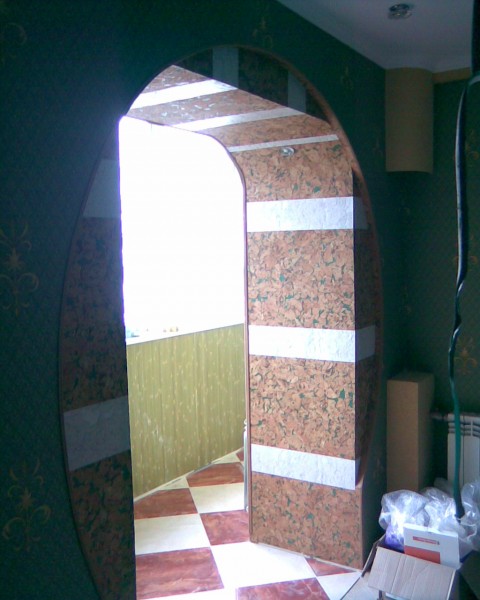


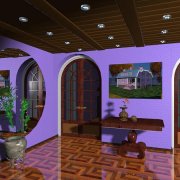
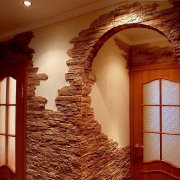
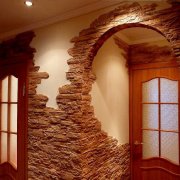
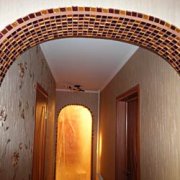

And you can do even easier to open the already pasted cork with ordinary PVA glue, ideal for temperature changes and expansions, gives a protective film and costs much less varnish or paint.